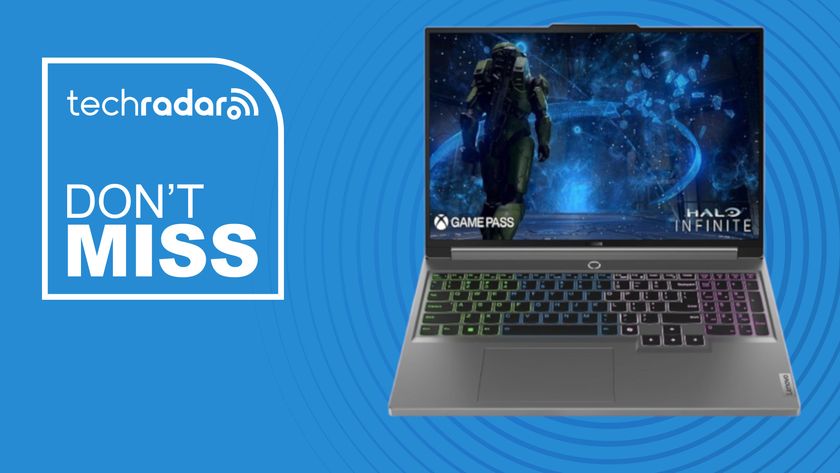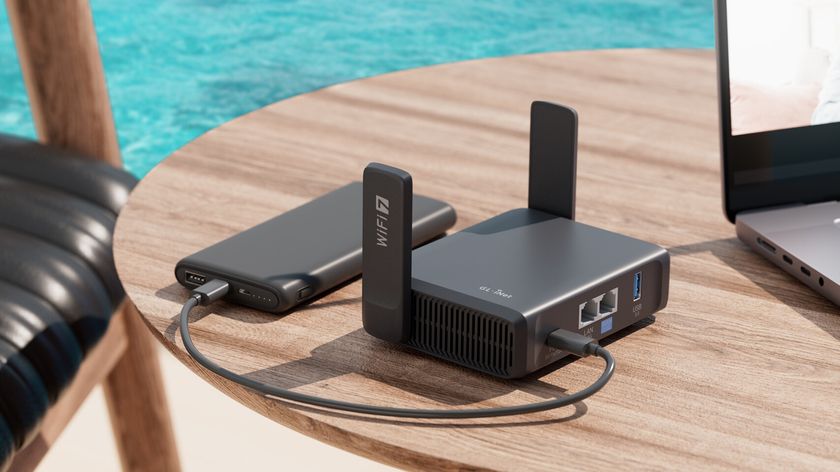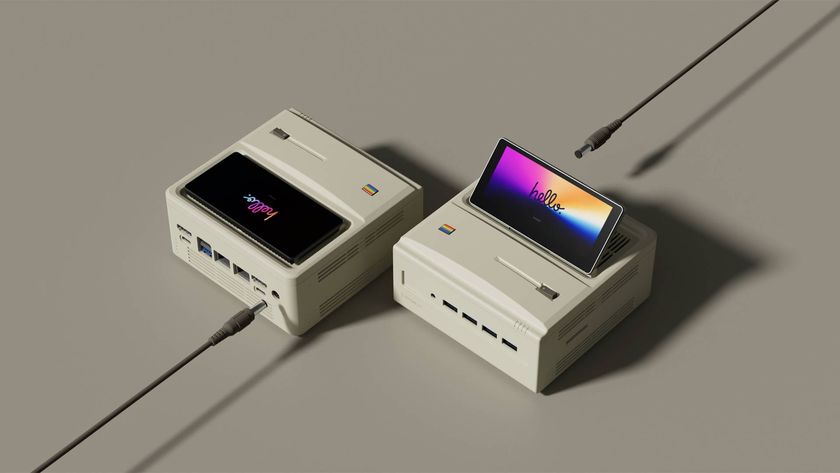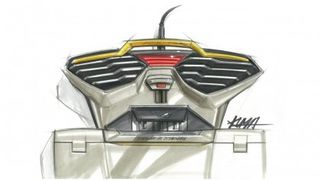
A closed loop system
Water interestingly is both one of the most effective solutions for cooling computers and something that could completely fry your system with a few drops. And so, in most cases, liquid cooling setups usually are completely closed-loop, water-tight systems.
However, given the mobile nature of laptops, a completely self-contained system wouldn't work with the GX700. Instead, Asus had to come up with a completely leak-proof design that would allow the gaming laptop to undock regularly.
"We designed a base that's stable enough so [that] when the pipes go in, it lines up perfectly," Yu said. "If something is crooked on one side or tilted on the other side, you're going to start to see spills."
When attaching the GX700 to the dock, the laptop sits on multiple metal posts, positioning the laptop vertically and horizontally. Meanwhile, when you push down the massive metal arm to extend the connecting elements, it creates a water-tight seal replete with two hooks that firmly attach the cooling base to the notebook.
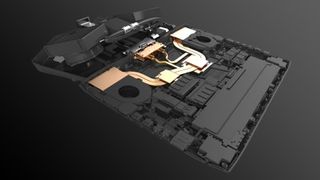
Maximizing the footprint
Beyond creating a system that actually worked, Yu said it was important to design a system that was thin, too.
From its PC-grade components to the traditional heat pipes and the extra liquid cooling channels, the GX700 has a lot of components bumping around inside its interior – yet it measures roughly an inch thick. By comparison, top of the line gaming laptops, like the MSI GT80 Titan and Alienware 17, measure 1.93 inches and 1.35 inches thick, respectively.
"[There are] all of these are extra pipes, extra water blocks, extra mechanisms that secure all these water components, so it was very difficult to fit everything in yet trying to maintain the performance," Yu explained.
Get daily insight, inspiration and deals in your inbox
Sign up for breaking news, reviews, opinion, top tech deals, and more.
In the end, it all came down to carefully arranging all the disparate parts of the laptop and improving the thermal performance. Regardless of the whether the liquid cooling system is in use or not, Yu explained the notebook can take advantage of its desktop-grade GPU up to 105-watts, even with just basic air cooling.
"You can undock it, so it can actually be portable; and when you're not looking for portability anyway, that's when you dock it in," Yu expounded.
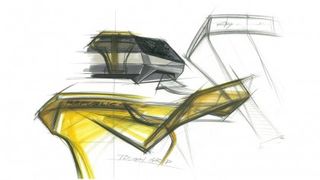
Going internal
Now that we know a liquid cooled gaming laptop is even possible, the most logical progression is a system that's completely internalized and does not require a dock. However, Yu suggests that this wouldn't work in reality because of two key issues.
"This was always one of the areas that we're investigating into, but right now the plan is still going external," Yu said. "The key lies in how do you not only transfer the heat, but to dissipate it with air."
As it's currently designed, all the heat is drawn away from the GX700 through water pipes and exhausted externally through the radiators built into the dock. Trying to put everything inside of the notebook itself would make the cooling system less efficient, not to mention make the whole device much thicker, too.
"Once it gets too huge, then you kind of lose the point of being a laptop," Yu said.
He went on to explain how the GX700 offers the best in both worlds, with portability when you want it and performance when it is docked.
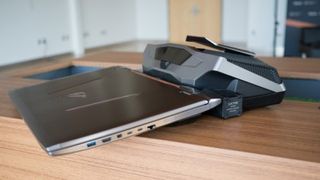
Aside from liquid cooling, Yu said Asus is researching other systems, including a 3D vapor chamber that it recently introduced in its ROG G752 laptop. There are also older iterations of the GX700 that are still on the drawing board.
"We actually have several iterations of a quad-cooling module," Yu said. "Some of our earlier ones were even bigger than what it is right now, but we are trying to constantly tweak it to get to the right size with the right performance."
If there's one thing to liquid cooling, it's that you're never done tinkering with it. That ethos seems to be alive throughout Asus, and it isn't done refining its systems for laptops just yet.
- It's time to get ready for CES 2016
Kevin Lee was a former computing reporter at TechRadar. Kevin is now the SEO Updates Editor at IGN based in New York. He handles all of the best of tech buying guides while also dipping his hand in the entertainment and games evergreen content. Kevin has over eight years of experience in the tech and games publications with previous bylines at Polygon, PC World, and more. Outside of work, Kevin is major movie buff of cult and bad films. He also regularly plays flight & space sim and racing games. IRL he's a fan of archery, axe throwing, and board games.


